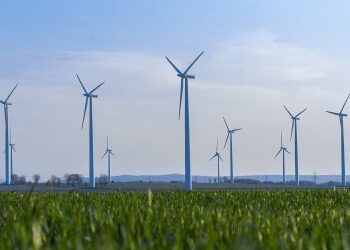Since Thys Louw, Emerging Market Fixed Income Portfolio Manager at Ninety one, discussed a renewed focus on frontier market debt earlier this year, the asset class has staged a remarkable turnaround – especially African markets. But it’s not too late to take advantage of some compelling investment opportunities. Louw outlines recent developments in the asset class and shares his thoughts on where to find the best opportunities.
Reforms, prudence and support
24 June 2024. African economies have rebounded in recent months. A combination of developments underpins this shift in fortunes. Key among these, ongoing fiscal and FX market reforms in the region’s economies – as policymakers have risen to the challenges posed by constrained debt market access.
Thys Louw, Emerging Market Fixed Income Portfolio Manager, Ninety One: “In the likes of Kenya, Nigeria, Egypt, and Côte d’Ivoire, we’ve seen significant reforms. Although Africa is not out of the woods given the balance-sheet pain inflicted by several crises over the past few years, it’s firmly on the road to recovery, with debt balances currently seeing the most pronounced deleveraging since the early 2000’s.”
Economies across the African continent continue to attract bi-and multilateral support, and markets that had been most worrisome for investors – those seemingly stuck amid debt restructuring disagreements between creditors – have made significant progress in resolving these issues. Examples here include Ghana: authorities and official creditors have agreed a memorandum of understanding on the external debt restructuring, paving the way for the Eurobond restructuring to be finalised. Meanwhile in Zambia, bondholders accepted a proposed deal to swap three current bonds into two new longer-maturity bonds (issued on 11 June) – the country has exited default status and earned an upgrade to its outlook to stable (by Moody’s).
External fund flows have returned
Although the ‘higher-for-longer’ interest rates backdrop means external flows into the region’s debt markets are somewhat below what we anticipated at start of year, the picture remains encouraging. In January, Côte d’Ivoire issued US$2.6 billion of new debt in the primary market, with the issuance of two Eurobonds oversubscribed. In February, Benin issued US$750 million, which was closely followed by Kenya issuing US$3 billion of new debt – half in local currency and half in US dollars. Both country’s issuances were well received, with strong foreign participation in the Kenya local auction. More recently, Senegal issued a US$750 million US dollar bond by private placement, highlighting the confidence in its emerging oil and gas economy under new leadership. It is clear that global asset allocators are reembracing the opportunity set.
Hard currency markets have rebounded
The improved appetite for risk has provided a particularly strong boost to African high-yield hard currency debt markets, as reflected in double-digit returns from some previously distressed markets, such as Zambia and Ghana, returning 23% and 17% respectively year to date, as of end May 2024. Egypt has also been an outperformer in Africa hard currency, returning over 23% over the same period. Egypt has been a favoured name among investors in Africa; after the significant rally, returns on the country’s hard currency debt are likely to be driven more by (still high) carry than further spread compression. That said, Egypt should still benefit from tailwinds if it stays the course and sees through reforms. Similarly, in other African hard currency debt markets, the large risk premia that was apparent at the start of the year in the more idiosyncratic reform-driven stories has diminished somewhat. However, pockets of value and attractive carry can still be found in the likes of Kenya and Nigeria, as well as in Ghana where we expect returns to be boosted when restructuring is finalised. Additionally, values remains in euro-denominated debt issued by some West African countries; these include Senegal, Côte d’Ivoire and Benin, where in each case, we expect positive credit-rating dynamics.
Local market opportunities to watch
While frontier credit has rallied, frontier local currency debt is still compelling.
Louw continues: “Better external and domestic conditions, combined with very high nominal yields and cheap currency valuations, are likely to support larger pockets of African local debt.”
Furthermore, local currency frontier market exposure can provide useful portfolio benefits, including significant diversification from its relatively low correlation to the broader emerging market debt universe and to US rates. This is a particularly valuable in the context of heightened election-related uncertainty facing investors over the coming months.
Additionally, there is some interesting alpha capture potential in this highly diverse investment universe. For example, the Egyptian pound- where the recent devaluation has created attractive valuations, with the country’s improving external balances likely to provide further support. Elsewhere, the recent sell-off in the Nigerian naira seems too aggressive, and with the central bank moving in right direction implementing rate hikes to tackle inflation, the currency looks compelling. In the local rates market, it is worthwhile looking at Kenya, where real (inflation-adjusted) yields are attractive, and the Kenyan shilling also seems well placed due to the fiscal and monetary tightening seen by policymakers.
In contrast, we are increasingly cautious on Uganda’s debt, given a deteriorating fiscal and external outlook, combined with an overvalued exchange rate. We are also wary of hard currency issuers such as Cameroon and Ethiopia; despite “cheap valuations” we have concerns around authorities’ commitment to reform and lingering socio-political risks.
Louw concludes: “Impressive policymaking in the face of adversity is paying off in many African economies. That has fed through into a significant recovery in this important component of the frontier-market opportunity set. A selective approach to investing will always be key in this complex and diverse investment universe, but this is a story that has further to run, especially in the local currency segment.





